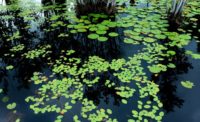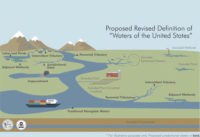The Trump Administration has published a revised rule defining which water bodies are subject to federal jurisdiction. The Navigable Waters Protection Rule, a replacement for the Obama Administration’s waters of the United States rule, was published in the Federal Register on April 21. The publication will set off a round of litigation over the rule, which is set to become final on June 22.
The Southern Environmental Law Center plans to file suit against the rule, which “leaves many waterways vulnerable to pollution, fill and destruction,” says Kathleen Sullivan, spokeswoman for the center. Sullivan says the group’s attorneys are still reviewing the rule, which appears to be the same as a draft rule issued in January. SELC has also challenged the repeal of the previous waters of the U.S. rule.
The revision by the Environmental Protection Agency and the Army Corps of Engineers was welcomed by the construction industry, which had complained the former rule, issued in 2015, was too broad and could restrict projects.
“Ultimately, we expect the new rule will reduce regulatory uncertainty and bureaucratic confusion, so essential projects needed to improve our infrastructure and the environment are more likely to proceed,” says Brian Turmail, a spokesman for the Associated General Contractors of America. When the draft rule was released in January, the American Road & Transportation Builders Association said it was pleased to see roadside ditches were specifically excluded from federal jurisdiction.
The new navigable waters rule lists four categories of waters that would be subject to federal jurisdiction: territorial seas and waters used in interstate or foreign commerce; certain tributaries; lakes and ponds; and wetlands that abut any of the other three types of waters.
The rule also specifies 12 sorts of waters that would not be subject to federal regulation. Among them are ephemeral streams and similar bodies of water, groundwater, ditches, previously converted cropland, artificial lakes and ponds, constructed stormwater control ponds or other features and “water-filled depressions” that are considered “incidental” to construction or mining activity.
Wetlands must touch another navigable body of water to be considered under federal jurisdiction under the rule. In some cases, wetlands separated from waters by a constructed feature, such as a levee, might also be judged a federal responsibility.




